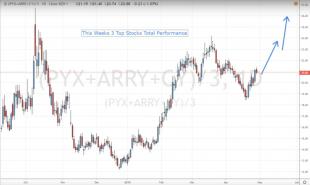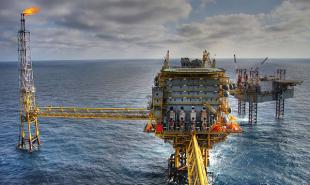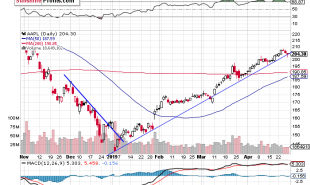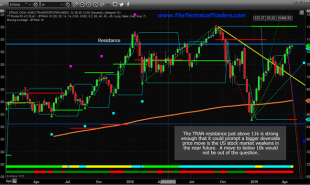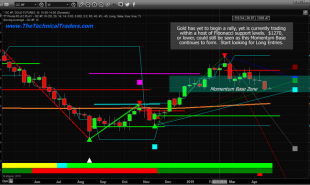
Gold Mine Production Growth Continues
Mine production growth slowed in 2016 to 1.1% as the influence of the project pipeline, built up during the last bull market, continued to wane. That said, last year’s total of 3,255t still represented a seventh consecutive all-time high for the sector, and a level that is now nearly one-third higher than a decade ago.
The 1.1% increase in 2016 was the lowest growth rate since 2008 when mine supply last contracted. Looking back over this period, annual mine supply has now increased by some 800t, with gains of over 60t coming from countries such as China, Russia, Mexico, Canada and Australia. Declines have been limited, with South Africa the only producer to record a fall of over 60t.
The recent slowdown has largely been caused by the marked fall in project capital expenditure, which occurred since gold prices fell significantly in 2013. But it is the long lead times associated with the mining industry that helps to explain why despite the lower prices in recent years, mine production has continued to grow. Indeed estimates vary, but the time from discovery to production is often more than ten years. What is more, this is also dependent on many factors, not least the economic viability of the project and companies’ ability to raise finance.
Using Metals Focus’ Peer Group Analysis, which tracks an array of financial, cost and production metrics from 12 of the largest gold mining companies (accounting for 30% of global production), we can see that following the 2012 peak in total capex of US$22.8Bn, annual expenditure has since fallen by 69% to just US$7.0Bn in 2016. Most significantly, expenditure on projects has fallen by 85%, as many of the majors have curtailed development of new production and have instead focused on repaying debt.
Also worthy of note is that there has not only been a reduction in the number, but interestingly also the size of new mines coming on-line. During 2010-13, an average of 11 new mines, each producing over three tonnes per annum came on-line, compared with an average of five per year between 2014 and 2016. During 2016, the largest mine starts were Morelos (Mexico) which added nine tonnes, followed by Obotan (Ghana) with six tonnes. Based on an analysis of our global mines database, in total 36 mines entered production last year adding a combined total of some 40t.
Looking forward, we forecast that mine production will again edge higher in 2017, marking the ninth consecutive year of growth. That said, the year-on-year increase is only anticipated to be marginal, and the near-term outlook for mine supply is more one of equilibrium, as gains from the project pipeline are balanced by ongoing declines at more mature operations. In a continuation of recent trends, growth in 2017 is expected to come from countries such as Suriname, Australia and the US, as projects that recently entered production ramp-up and deliver their first full year of output.
Beyond 2017, despite the aforementioned substantial cuts in capital expenditure, we are not forecasting that global mine supply will markedly contract. The project pipeline may not be as strong as in previous years but currently operating mines have sufficient reserves and resources to maintain current levels of output.
The largest 50 gold mines (which account for over 25% of global mine supply) have just over 11 years, on average, of reserve mine life remaining. These mines also have an additional 11 years of mineral resources (exclusive of reserves), which have the potential to be recategorised into reserves. As of end-2016, we estimate that global gold mineral reserves stood at 57,300 tonnes (1,842Moz), with a further 110,100 tonnes (3,540Moz) classified within the resource category. Of interest, however, is that the average grade processed at primary gold mines during 2016 was 1.44g/t, against a mean reserve grade of 1.33g/t (7% lower). The years of 3% per annum growth do now look to be behind us. However with buoyant prices, adequate reserves and a mining industry in a leaner position than in 2013, mine supply looks set to remain at historically elevated levels.
Market Developments
The official sector to remain a major net bullion buyer in 2017, albeit at a slighter slower pace
In 2016, net official sector purchases dropped by 35% y/y to a six-year low of 377t. That said, in spite of the fall, net buying remained high by historical standards last year. A desire to diversify away from their largely US dollar-denominated reserves was not alone in making gold appealing to reserve managers; geopolitical risks also played their part.
After hitting a multi-decade high of 646t in 2013, net buying from the official sector has recorded successive losses in the last three years. Related to this has been the falling number of central banks interested in raising gold reserves. During 2010-13, official sector buying was more widespread geographically. By contrast, in the last three years, gross purchases have been increasingly dependent on only two countries, namely China and Russia. Unsurprisingly, as Chinese buying slowed in 2016, especially in H2, the global total also fell.
In our view, several factors contributed to this drop. First, for many reserve managers, confidence in gold was clearly shaken during 2013’s heavy sell-off. Second, after sizeable buying, gold holdings may have already met their target level, which means that no further near term, significant purchases are required. In addition, in the wake of the economic slowdown, recent years saw many emerging market countries face growing pressure on their foreign exchange reserves. As a result, currency stabilisation came to the fore for reserves management rather than portfolio diversification. Finally, falling foreign exchange reserves, along with higher gold prices, meant that gold’s share rose for many countries last year.
Looking ahead, the official sector is expected to remain a major bullion buyer in 2017, although volumes are likely to weaken at the margin. To a large extent, the decline is premised on assumptions of a reduction in Chinese buying, as currency stabilisation will remain the focus for the PBOC in the near term. However, given the country’s massive foreign exchange reserves, the desire for portfolio diversification should remain intact in the medium to long term, and this should continue to favour further allocations to gold. Turning to Russia, we expect the country to maintain a similar pace of buying to 2016, as geopolitical risks and the fact that gold can be sourced in the local market (without affecting their foreign exchange reserves) will continue to favour gold acquisitions. Elsewhere, purchases from other developing countries are also expected, albeit of a limited magnitude, as a result of the forecast recovery in gold prices and the pressure on currencies for many emerging markets.
Read more by The Hound


